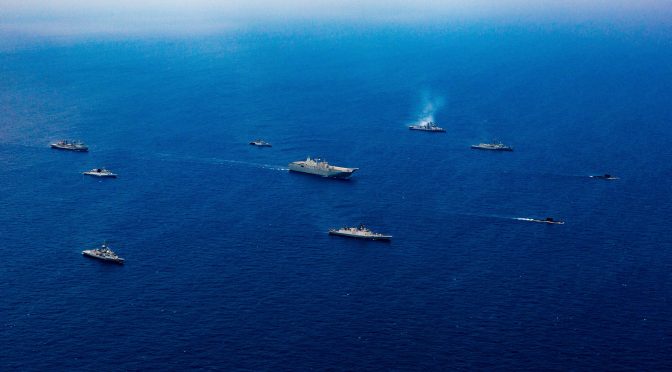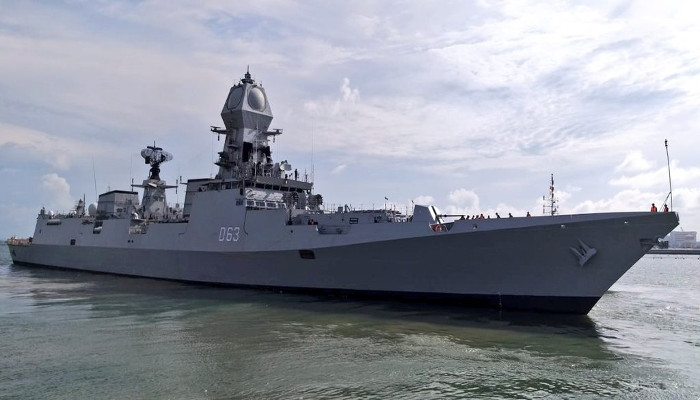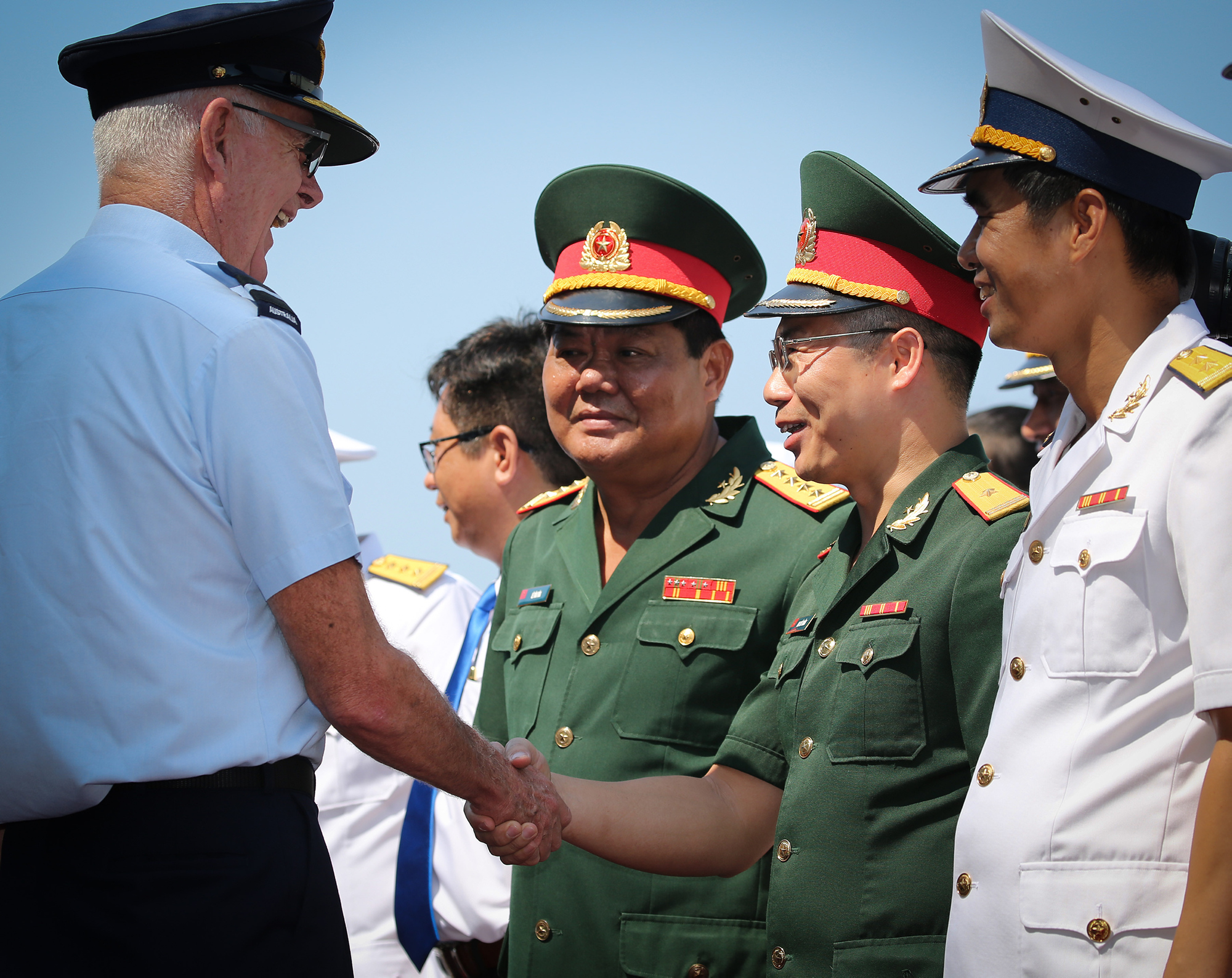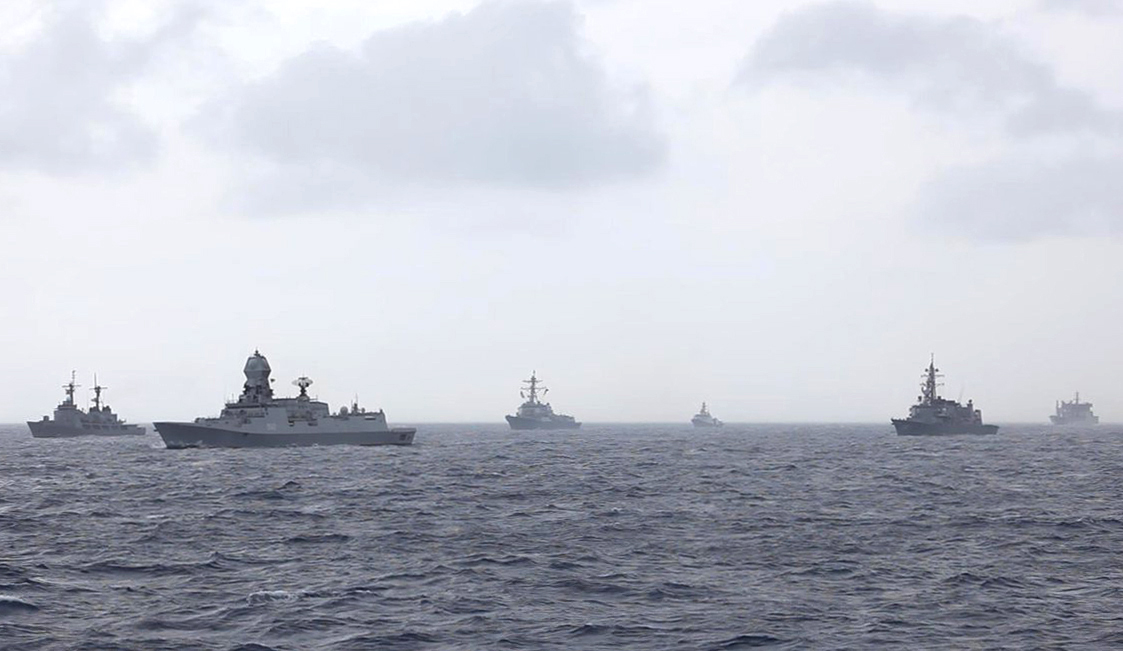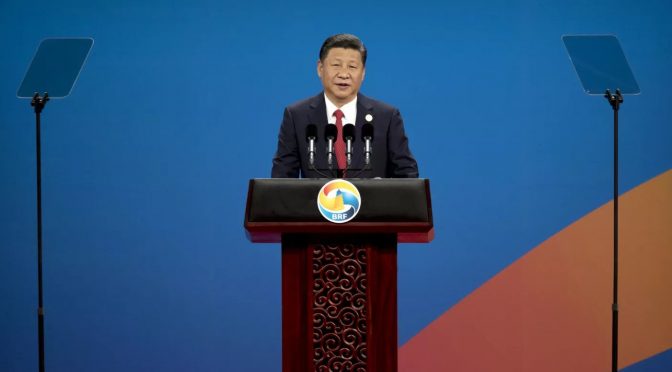The following article originally featured in The Foreign Service Journal and is republished with permission. Read it in its original form here.
By Philip A. Shull
Winston Churchill famously referred to Russia as “a riddle wrapped in a mystery inside an enigma.” Doubtless, many would agree the same could be said of China. During nearly four decades dealing off and on with China, first as a university teacher and then as a diplomat with the Foreign Agricultural Service, I have seen hundreds of officials and exporters from dozens of countries smack their foreheads in surprise and frustration at Chinese behavior—from unjustly rejected shipments and illogical lurches in negotiating positions to blatant disregard of World Trade Organization commitments.
Since the United States and the People’s Republic of China established diplomatic relations in 1979, the relationship has swung back and forth between one of glowing expressions of optimism about shared interests in a peaceful and prosperous world, and one of tension and mutual mistrust. Always underpinning hopes for a happy future on the U.S. side was the basic assumption that China would join the international community as a “responsible” player, and that the obvious benefits of a “rules-based” system of trade and diplomacy would inevitably lead China in that direction, to the betterment—and enrichment—of all.
Since Beijing’s accession to the WTO in 2001, trade with China has exploded and the country’s potential as a market has become greater than ever. Yet the promise of China operating as a trusted and conventional member of the international community has not been realized and seems further away than ever. Instead, China’s spectacular economic rise has led to outrageous behavior and unfair competitive practices. China’s frequent and flagrant flouting of WTO rules has resulted in many billions of dollars in lost trade and consternation among U.S. and “like-minded” traders, policymakers and negotiators.
So, what’s going on? Why doesn’t China behave like a “normal” country and play by the rules? Why does Beijing act in ways that undermine the confidence of the global community? Why would China take these self-destructive actions now, precisely when its historic achievements have made it the second-largest economy in the world, and when its new prominence on the world stage has rekindled a desire to be seen as a global leader and to reclaim what it sees as its rightful position as “The Middle Kingdom”? Most importantly, how do we encourage China to be a positive force in a world where its impact is so huge?
Rules as Objective Requirements vs. Optional Tools
It will come as no surprise to diplomats and other international practitioners that China’s actions and reactions—which many Americans find shocking—may be traced in large part to fundamentally different expectations and worldviews. When it comes to global economic competition, those differing views include (a) the role and responsibility of government and (b) the role and purpose of rules and regulations.
While the American ideal of the government’s role in trade is to create and police a transparent, predictable egalitarian system in which participants may compete and strive for “life, liberty and the pursuit of happiness,” the Chinese ideal is very different. Most Chinese I know believe the government not only may, but must take a far more active role. Because government has the responsibility to ensure domestic tranquility and provide prosperity, it is only natural for government at all levels to become active and biased participants in promoting trade.
Similarly, while the American view is that rules and regulations should be equally applied and consistently enforced, Chinese government officials are expected to use rules and regulations as simply another set of policy tools to be used or set aside in the pursuit of broader policy objectives that serve the national interest. The U.S. government and U.S. companies are not the only ones that have had secrets stolen or shipments unjustly rejected. Indeed, when it comes to violating international trade norms, China has been a model of nondiscrimination.
The Chinese are genuinely puzzled by our reverence for “principle” and see it as a weakness to be exploited. I have been in many trade negotiations where the Chinese seek to defend an unjustified trade barrier by quoting from the WTO’s declaration that each country has the right to establish its own regulations. Fundamentally, China rejects and is even confused by a trading system based on “rule of law,” and tries to operate instead according to a “rule by law” of its own making.
Understanding China’s Behavior
The root of China’s interventionist and authoritarian role in trade and all other parts of its economy may be found, among other places, in its searing experience with scarcity, especially food scarcity.
As I learned in a Foreign Service Institute area studies class decades ago, no country in the world has known more starvation than China. The impact of recurring famine was so common and so profound that it became embedded in the Chinese language. The Chinese word for “population” is made up of “person” + “mouth,” and a colloquial way of saying hello is, “Have you eaten yet?” (By contrast, in English we talk in terms of “per capita,” which comes from the Greek “per head.” Most Western language greetings inquire about health and family, perhaps because it was disease rather than starvation that was the greatest threat to life.)
One of the worst famines in China’s history took place after the founding of the PRC in 1949. While estimates vary, it is widely agreed that Chairman Mao’s Great Leap Forward resulted in tens of millions of Chinese dying of hunger from 1959 to 1962. Significantly, this occurred during the formative years of most of China’s current top leadership.
Combined with the powerful weight of history and imperial Confucian tradition, these long years of tremendous suffering and turmoil refreshed and entrenched the conviction in the Communist Party that strong, centralized authority is essential to bringing a higher standard of living for the people, and a bright future for China. Yet as confident as the PRC leadership is that its power and position justify its behavior, many Chinese officials also recognize that China’s continued growth and prosperity depend on constructive economic relations with other countries.
The PRC’s lack of respect for the WTO and other international norms is also because China had no part in their creation, and its experience with international treaties has been far from pleasant. After many centuries as the richest and most advanced country in the world, China experienced invasions and “unequal treaties” in the 19th and 20th centuries. Profoundly humiliating, these experiences still help shape how Chinese leaders approach international trade and security questions—including their aggressive steps to assert China’s centuries-old “Nine-Dash-Line” territorial claims in the South China Sea. Of course, to understand unacceptable behavior is not to excuse it.
I agree with many others who believe that the best way to change China’s behavior is to work together with our allies. Beijing’s modus operandi is to divide and conquer. While the United States is strong enough to go “toe-to-toe” with China, many others are not. China respects power. To the extent we can enlist those countries in our efforts, we will all stand that much taller.
The Great Wall Separating Common Ground
The Chinese term mao dun (literally “spear shield”) is used to describe two irreconcilable differences. It comes from a famous folktale about an endless battle between two warriors—one with a spear that could pierce any shield, and the other with a shield that could stop any sword. Here, drawn from my personal experience, is a sampling of common Chinese practices that run counter to our sense of right and proper international behavior.
Inconsistent application of import regulations. A product rejected at one Chinese port may well be accepted at another. I was meeting with an importer when he got a call about an arriving shipment. “Yes … good … What?! NO! The ship must dock at BERTH SIX! That is where things are arranged!” he exclaimed. Vastly different tariffs may be assessed for the same product, as well. In one case I worked on, one company importing a product with a 44 percent tariff paid zero, while another importer paid 100 percent.
Ignoring their own trade bans and their own rhetoric. For many years in the trade, there was a running joke that because Beijing banned a certain U.S. product, China was only our fourth-largest market for it. During a break in one negotiation in which I had been told yet again how U.S. meat was unsafe and posed a grave risk to Chinese, my opposite number came up to me and said, “Minister Counselor Shull, I want to tell you my wife and I are so happy our son will be going to university in the United States!”
Changing requirements in the middle of a negotiation. When Chinese officials were surprised to learn we could comply with a new technical requirement for an agricultural product, they called a break and then announced a stricter one.
Rejecting shipments that are no longer profitable. If the price of an imported product has dropped between the signing of the contract and the delivery, chances rise that Chinese inspectors will find the shipment does not meet contract specifications and reject it.
Ignoring some laws and regulations to achieve a more important objective. During the peak of the “one-child policy” in the late 1980s, I discovered in my crop travels that most farmers were ignoring it. When I asked a Beijing official in charge of rural policy about this, he said: “Local officials must adapt central government policies to local conditions. The one-child policy in the villages might be very unpopular with the peasants.”
Relationships trump laws and rules. One joint venture executive shared two kernels of wisdom: “The signing of the contract marks the beginning of the negotiations,” and “If the relationship is not good, the contract won’t save you.” (These attitudes toward relationships played out even inside the embassy. In the early days of ICASS, the admin section put out a notice that agencies could no longer share office supplies. When one Foreign Service National was challenged for using another section’s copier, she replied, “Oh, it’s okay, because one of your officers is married to one of our officers, so we are related.”)
Mistrust of “The People.” Even otherwise open-minded Chinese I have spoken with say China is “too big” for democracy. When I spoke with demonstrating pro-democracy students in Tiananmen Square in 1989, some told me: “Well, of course, we can’t let everyone vote. Peasants don’t have education and would vote to raise food prices, and that would be destabilizing.”
Mistrust of “The Market.” During the early introduction of market reforms, one local grain official asked me, “How does the U.S. government set the price of bread?” I explained that our government doesn’t do that; the price floats. “If there are 100 people and 50 loaves of bread, there is one price; and if there are 50 people and 100 loaves of bread, there is another price,” I said. He paused for a moment and then asked, “How does the U.S. government set the price of bread?”
Setting impossible standards. One way China has tried to reconcile millennia of absolute government power over commercial operations with an objective and egalitarian rules-based system of trade and laws is to set standards no one can meet, and then give officials the discretion about whether to enforce them. This practice alone has disrupted billions of dollars in U.S. food and agricultural exports.
Competitive Leadership
One of the most eloquent and insightful statements about international leadership I have seen is in President Dwight David Eisenhower’s farewell address. Delivered in 1961, at a time when the United States was the dominant power in the world, he said: “Understandably proud of this pre-eminence, we yet realize that America’s leadership and prestige depend, not merely upon our unmatched material progress, riches and military strength, but on how we use our power in the interests of world peace and human betterment.”
This truth is a basic lesson Chinese leaders have not yet learned. As long as China behaves with such narrow self-interest, it cannot join—much less displace—the United States as a top global leader. China is still trapped in the mindset that “might makes right” and that being the biggest means being the best.
There is a reason why many countries have prominent boulevards and plazas named Roosevelt, Kennedy and Eisenhower. Global leadership is demonstrated and earned by pursuing policies that work toward the common good, and by honoring commitments and following rules even when they disadvantage the country in a particular case. The reservoir of goodwill and trust the United States has built up over the decades endures, despite occasional missteps. When combined with the quality of our products and trustworthiness of our traders, the United States is well placed to retain its role as a global leader and its tremendous competitive advantage in global trade.
To give credit where it is due, hard work, determination and economic reform policies have transformed China, lifting hundreds of millions out of dire poverty and making it a leading world economy. But without a fundamental change in behavior that makes it less of a riddle, mystery and enigma, China will not become a leader of nations.
Philip A. Shull is a retired FSO who served in China (three times), the Philippines, Argentina, Korea and Hong Kong during 31 years with the Foreign Agricultural Service. He is a retiree representative on the 2017-2019 AFSA Governing Board.
Featured Image: istockphoto.com


